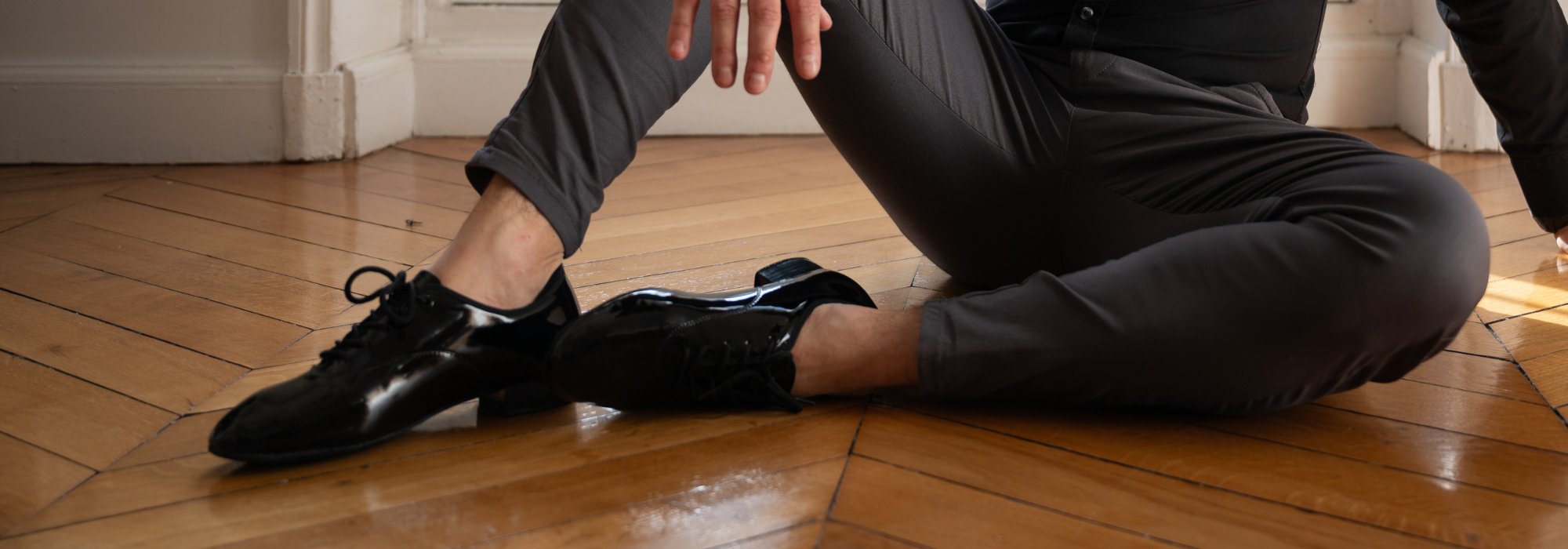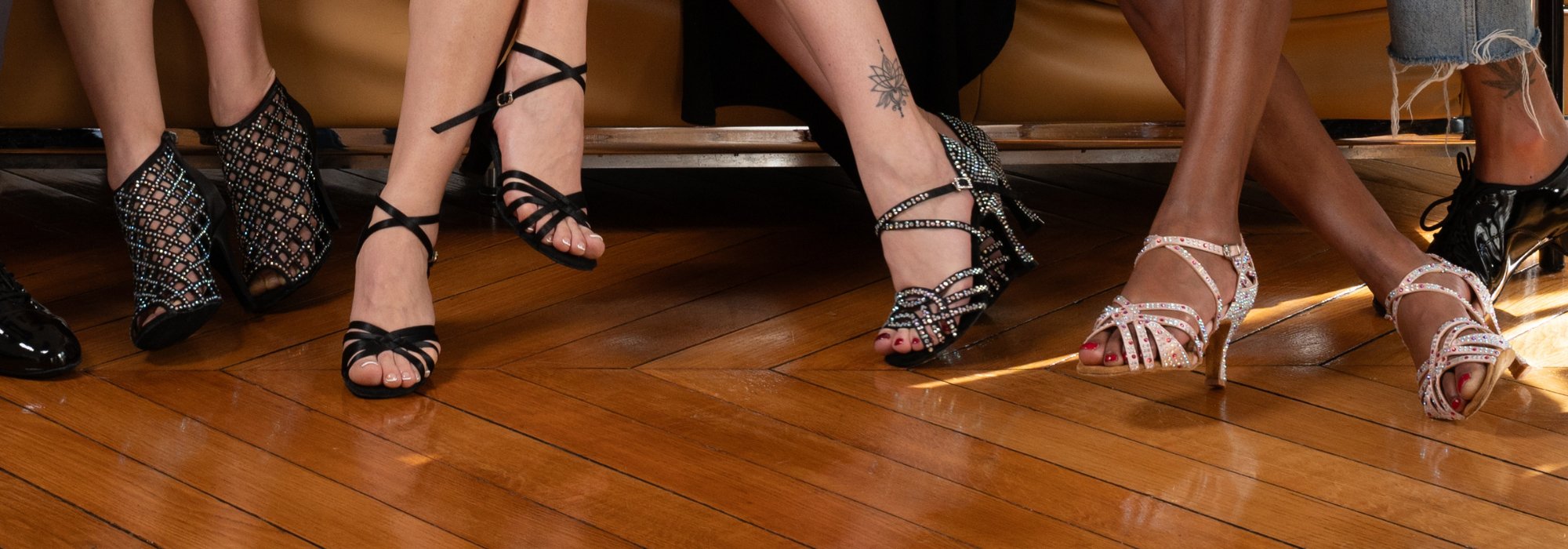The history of salsa
You want to know more about the origin of the salsa And its incredible journey through cultures? You ask how this Latin dance was born and which popularized it all over the world?
This page will enlighten you.
Salsa, more than just dance, is a Unique cultural mixture, merging influences African, caribbean And North American. Through the decades, she has transformed and conquered the dance tracks around the world.
We will therefore see in this article:
-
THE Historical roots salsa
-
The different developments salsa through decades
-
What type of dance is salsa and its main variants
-
THE emblematic figures who have marked his story
Prepare for submarine in the vibrant history of salsa and to discover why it is today an essential reference for Latin dances!
What is the origin of salsa?

A multicultural heritage from the Caribbean
Salsa is much more than a simple musical style or a dance. It is a cultural fusion born from the meeting between several Afro-Caribbean musical traditions.
Number of a mixture between African rhythms, Spanish melodies and North American influences, it has developed over the centuries before conquering the world.
The Afro-Caribbean Salsa roots
The history of salsa begins in Cuba, at the beginning of the 20th century, with the His Cubano. This musical style combines African percussion and string instruments of Spanish origin.
The African slaves deported to the Caribbean brought their syncopated rhythms, while the Spanish settlers introduced the guitar, the key and the European harmonies.
Little by little, other musical styles enrich the Cuban sound:
-
Danzón, influence by the European opposite.
-
Rumba, very rhythmic and anchored in Afro-Cuban culture.
-
Mambo, which popularizes the use of brass and a more energetic structure.
-
The cha-cha-cha, which brings a more syncopated and dancing touch.
These developments give birth to richer music, carried by visionary artists as Arsenio rodríguez And Benny Moré.
Puerto Rico: a key role in the evolution of salsa
If Cuba is the cradle of salsa, Puerto Rico has played a major role in its development.
The island has its own musical traditions, including the bomba and the plena, which have an influence on the rhythm and the interpretation of salsa.
From the 1950s, many Puerto Rican musicians emigrated to the United States, in particular to new York, where they meet exiled Cuban artists.
This merger between Cuban and Puerto-Rijaines traditions will give birth to a more urban, more modern sound, marking a major turning point in the history of salsa.
Salsa explosion in the United States
In the 1960s, new York becomes the world capital of salsa.
With the influx of Latin immigrants, Cuban and Puerto-Rican music soaks influences jazz, funk And drunk, creating a new version of salsa, more dynamic and sophisticated.
Emblematic clubs like the Palladium Ballroom become essential places where musicians and dancers intersect, propelling salsa to the front of the stage.
The emblematic figures of New York salsa
In this musical effervescence, several artists emerge and revolutionize salsa:
-
Tito Puente, nicknamed "El Rey Del Timbal", merges salsa with jazz and modernizes percussion.
-
Celia Cruz, "La Reina de la Salsa" brings a powerful voice and an unrivaled charisma.
-
Willie Colón And Héctor Lavoe popularize a more urban and committed sound.
-
Johnny Pacheco, co -founder of the label Fania Records, organizes the global growth of salsa.
The impact of the Fania Records label
In the 1970s, Fania Records becomes the engine of salsa.
This New York label brings together the best Latinian musicians under the name of Fania All-Stars, forming a mythical collective that propels salsa to the international scene.
Thanks to global tours and legendary recordings, salsa is an overall phenomenon, beyond the borders of the United States and the Caribbean.
Salsa today: a dance and living music
Today, salsa continues to evolve and seduce new followers.
Styles diversify:
-
There Cuban salsa, more traditional and anchored in Afro-Cuban culture.
-
There Puerto Rican salsa, elegant and technical, often used in competition.
-
Colombian salsa, fast and rhythmic, popular in Latin America.
Dance schools, festivals and competitions maintain the salsa flame, allowing each generation to explore and enrich this timeless style.
One of the major turns was the creation of the label Fania Records in 1964, which standardized the term "salsa" And popularized this musical genre worldwide.
What type of dance is salsa?

Salsa is a couple dance, energetic and rhythmic, characterized by fast movements and complex legs of legs.
Its particularity? She dances on 8 times, with a causing tempo and fluid trips.
The main styles of salsa
There are several styles of salsa, each with their own characteristics:
-
Cuban salsa (casino) : More circular and improvised, she draws her inspiration from Rumba and Cubano sound.
-
Puerto Rican salsa on 1 (Los Angeles style) : Dance online, with spectacular figures and a jazz influence.
-
Puerto Rican salsa on 2 (New York style) : More fluid dance, centered on musicality, popularized by Eddie Torres.
-
Colombian salsa : Fast and rhythmic, with very marked legs of legs.
Whether you are an advanced amateur or dancer, there are A style of salsa that corresponds to your pace and your desires.
Who is the king of salsa?
If there are many artists and dancers who have marked the history of salsa, Eddie Torres is unanimously recognized as the king of salsa.
Born in 1950 in New York, he was The first to structure Puerto Rican salsa on 2 (New York Style) and to do it A dancing style codified and internationally recognized.
Why is Eddie Torres an essential figure?
-
He popularized salsa on 2 : His work made it possible to adapt the dance to the rhythmic structure of the Mambo and the modern salsa.
-
He trained generations of dancers : Thanks to his pedagogy, he revolutionized the teaching of salsa.
-
He helped make salsa a scenic art : He has developed a more fluid and elegant style, highlighting musicality and expression of the body.
Even today, Many dancers follow his methods and are inspired by his legendary style.
Why learn salsa today?

An energetic, social and cultural dance
Salsa is much more than a simple dance. She embodies energy, passion and body expression. Its global success is explained by its ability to bring together and create a unique atmosphere.
By learning salsa, you develop dance skills, while enriching your social life and your culture.
The physical benefits of salsa
Practicing Salsa regularly offers many health benefits:
-
Synchronization of movements with music, development of balance and body control.
-
Salsa is a dynamic activity that makes the heart work and improves endurance.
-
The legs, the trunk and the arms are asked to execute the steps and the figures.
-
Better back resistance and general stability strengthening
The social and psychological advantages
Salsa is a social dance par excellence, which promotes communication and self -confidence.
-
Ideal for meet people
-
An excellent means of expression
-
A boost of self -confidence
-
A source of well-being
A cultural journey through music
Dancing salsa is also exploring a rich and varied culture:
-
A merger of Afro-Caribbean and Latin influences which give all its authenticity to this dance.
-
A diversity of styles : Cuban salsa, Puerto Rican on 1, on 2, Colombian ... Each style has its specificities.
-
A musical story carried by emblematic artists Like Celia Cruz, Johnny Pacheco or Eddie Torres.
-
A strong link with Latin music And its catchy rhythms, which make you want to move from the first notes.
Where to learn salsa?
If salsa can be learned alone, taking courses with an experienced teacher is essential to progress effectively.
-
Acquire solid bases And avoid frequent errors.
-
Take advantage of personalized corrections To refine your technique and improve your style.
-
Learn to dance with different partners, essential to evolve in the evening.
-
Follow a progressive method, adapted to your level and your goals.
Salsa, between history and modernity
That's it, here we are at the end of this article! Now you know The origins of salsa, its different styles and its evolution through time.
But salsa is not only learned by reading: You have to live it and feel it on the dance floor.
So why not take the first step?
→ Join a course at the house of Salsanueva.fr And dive into the world of salsa!
And to be perfectly equipped, do not forget to discover our specialized shop , with Dance shoes and clothes suitable for salsa.
Dance with style, confidence and pleasure today!









